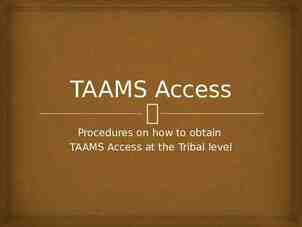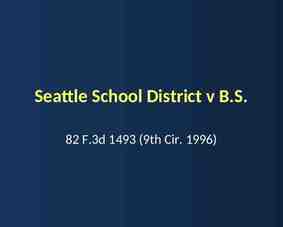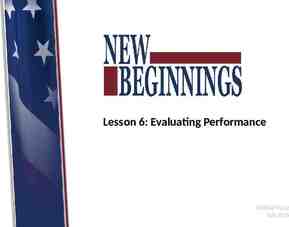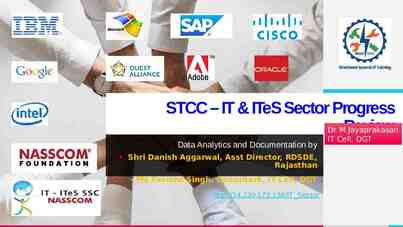Goals Together for Partnership: A Multiple Case Study Implementation
36 Slides597.42 KB

Goals Together for Partnership: A Multiple Case Study Implementation Project of a School-Wide Family-School Partnership Model 2022 CADRE Symposium October 26-28: Denver, CO Tracy Gershwin, Ph.D., Professor, University of Northern Colorado Kathleen Kyzar, Ph.D., Associate Professor, Texas Christian University

Session Goals NOTE: This content was produced under U.S. Department of Education, Office of Special Education Programs, Award Nos. H323A150009 – 18 and H328M140017. The views expressed herein do not necessarily represent the positions or policies of the U.S. Department of Education. No official endorsement by the U.S. Department of Education of any project, commodity, service, or enterprise mentioned in this product is intended or should be inferred. Understand key issues influencing family-school partnership (FSP) programming Describe the Goals Together for Partnership (GTP) Model Articulate stakeholder perceptions of GTP Offer next steps for GTP

Key Issues Influencing Family-School Partnership Programming

Background and Significance of GTP Research-to-practice gap School-centric thinking Intentionality related to partnerships Access to resources

The GTP Model

Goals: Infuse the Tenets within all cultural aspects of a school in which families and educators interact to improve student engagement

Research Evidence for the GTP Model Teachers and family members have access to current partnership research and to learning opportunities that enable them to grow in their family-school partnership knowledge and skills. Teachers and families believe that partnerships are important, and they actively work to improve their partnerships in an intentional and reflective way. Teachers and families have access to the necessary partnershiprelated resources and supports within their school system.

GTP Implementation Model GTP LEADERSHIP TEAM Principal 2 teachers 2 family members GTP IMPLEMENTATION TEAM Teachers from each grade level Family-member partners

Leadership Team Member Responsibilities Completion of Online Module Training Series to learn foundational concepts Attendance of 1 and 1½ day Summit Symposium Identification of Implementation Team Members Development of Implementation and Evaluation Plan in line with needs and culture Regular meetings with team and researchers Provision of TA Support to school community Participation in two interviews, two focus groups, and completion of brief surveys

Implementation Team Responsibilities GTP Training provided by school’s GTP Leadership Team Implement GTP Plan, as determined by Leadership Team Completed survey regarding partnership perceptions

Partnership Goal Setting Step 1: Set attainable GTP Tenet Goal Step 2: Identify concrete actions toward GTP Tenet Goal Step 3: Anticipate obstacles and identify solutions Step 4: Carry out GTP Tenet Goal Step 5: Reflect and adjust GTP Tenet Goal

Knoster’s Change Model

Train-the-Trainer Model GTP Learning Modules GTP Action Planning Materials Parent-Teacher Conference Materials GTP Implementation Team Recruitment Materials Templates for Check-Ins Survey templates Goal Setting Guidelines and Templates Websites/Partnership Resources Data Collection Forms

GTP Conference Resources

Stakeholder Perception of Partnerships and GTP Implementation

Guiding Questions and Method Questions: What features of the GTP Process are required to ensure that it is usable in elementary school settings? What are resultant trends in the perceptions of family-school partnerships for teachers and family member participants? Method: Mixed-method research guided by action research design Data sources: interviews, artifacts, focus groups, surveys

Three Participating Schools in One Midwest State Spruce (Suburban) Willow (Rural) Pine (Urban) 45.5% White, 23.4% Latinx, 22% Black/African American, 6.8% Hawaiian/ Pacific Islander 61.7% White, 7.6% Latinx, 4.7% Black/African American, 19.9% Asian American 67.4% White, 15.5% Latinx, 4.5% Black/African American, 3.8% Asian American Title 1 Title 1 Title 1 14:1 15:1 17:1 205 Students 643 Students 582 Students 14 Teachers 43 Teachers 35 Teachers

Leadership Team Participant Characteristics Principals (n 3) Teachers (n 6) Family Members (n 6) Male 1 0 0 Female 2 6 6 White 3 6 6 Gender Race

Implementation Team Participant Characteristics Teachers (n 49) Family Members (n 26) 0 (0%) 2 (7.7%) Female 49 (100%) 24 (92.3%) White 47 (95.9%) 26 (100%) Other 2 (4.1%) 0 (0%) Gender Male Race

Family Member-Specific Characteristics Characteristic Parent (bio, step, foster, adoptive) Leadership Team Family Members (n 6) Implementation Team Family Members (n 26) 5 (83.3%) 24 (92.3%) 1 (16.7) 7 (26.9) 4 (67.7%) 8 (30.8%) 0 10 (38.5%) 5 (83.3%) 22 (84.6%) Education High school graduate Associate/ Bachelor’s Degree Graduate Degree Married/Living with a Partner

Family Member-Specific Characteristics Characteristic Leadership Team Family Members (n 6) Implementation Team Family Members (n 26) 4 (66.7%) 5 (19.2%) 0 7 (26.9%) Once or twice a year/semester 4 (66.6%) 19 (73%) Monthly or more frequently 1 (16.7%) 0 Eligibility Free/Reduced Lunch Frequency Volunteer Time Never

Family Member-Specific Characteristics Characteristic Leadership Team Family Members (n 6) Implementation Team Family Members (n 26) 0 (0%) 6 (23.1%) Once or twice a month 1 (16.7%) 7 (26.9%) Weekly or more frequently 4 (66.7%) 13 (50%) Frequency of Communication with Teacher Once or twice a semester (fall/spring), or less

Teacher-Specific Characteristics Characteristic Leadership Team Teachers (n 6) Implementation Team Teachers (n 49) 1-5 4 (66.7%) 33 (67.3%) 6-10 0 (0%) 12 (24.5%) 11 2 (33.3%) 4 (8.2%) Tenure at Current School (in years)

Teacher-Specific Characteristics Characteristic Leadership Team Teachers (n 6) Implementation Team Teachers (n 49) Not at all or a little 2 (33.4%) 8 (16.3%) Somewhat 1 (16.7%) 14 (28.6%) Adequately 3 (50.0%) 17 (34.9%) Completely 0 (0%) 10 (20.4%) Perceptions regarding extent of pre-service preparation for partnership

Teacher-Specific Characteristics Characteristic Leadership Team Teachers (n 6) Implementation Team Teachers (n 49) Once or twice a semester (fall/spring), or less 1 (16.7%) 8 (16.3%) Once or twice a month 2 (33.3%) 18 (36.7%) Weekly or more frequently 3 (50.0%) 23 (46.9%) Frequency of communication with families

Implementation Activities Spruce Embedded GTP within school improvement plan Teachers met and collaboratively prepared a plan to share with parents, and subsequently met with parent partners Follow up steps for midyear conferences, cancelled due to COVID19 Willow Presented Tenets and GTP Overview to PTA PTA purchased “YOUmatter” t-shirts and bracelets Faculty training provided by GTP Leadership Team E-mail to families in preparation for conferences in line with GTP conference materials Pine Embedded within tiered instructional support framework Created a visual and video explaining 5 Tenets for the school community (bookmarks accompanied) Utilized GTP Conference Materials for fall conferences

Perceptions of the GTP Model Perceptions of the GTP Online Modules were mixed: “necessary background information,” “efficient,” “user-friendly,” yet also “lengthy,” “repetitive,” “time consuming,” and “could be improved with more vignettes and visuals.” Summit Symposium provided time and space for team collaboration and helped with implementation.

Fidelity The following GTP aspects were not utilized: Tenet Goal Setting Process TA Support from Researchers Project Management Tools Implementation occurred during the 2019-2020 Year, COVID-19 Pandemic resulted in building closures and online instruction starting in March 2020

Perceptions of the GTP Model GTP Improves Partnerships GTP Leads to Intentionality GTP Leads to a Mindset Change Implementation Challenges: A new approach Teacher and family buy-in Time

Perceptions of the GTP Model Key factors for implementation: A strong leader or leadership team is necessary for implementation. Intentional and frequent communication with families is important. Bi-directional interactions are necessary for meaningful partnerships. Stronger relationships are an outcome when partnerships focus on student/family success.

Next Steps

Next Steps Replication which addresses shortcomings regarding design and usability of GTP: Partnership Goal Setting process and Online Modules Lack of diversity in sample Number of new initiatives/PD activities at school & level of autonomy for new initiatives

Next Steps Additional considerations for replication study: Supplementary training emphasizing: project management tools, participatory action research (PAR) principles, implementation science, ongoing evaluation Mechanism for monthly deliverables Equity in leadership team member roles/responsibilities Stronger preliminary processes enabling teams to identify clear reasons for participating that are grounded in internal (not external) motivation

Questions? Comments?

Thank you! [email protected]







